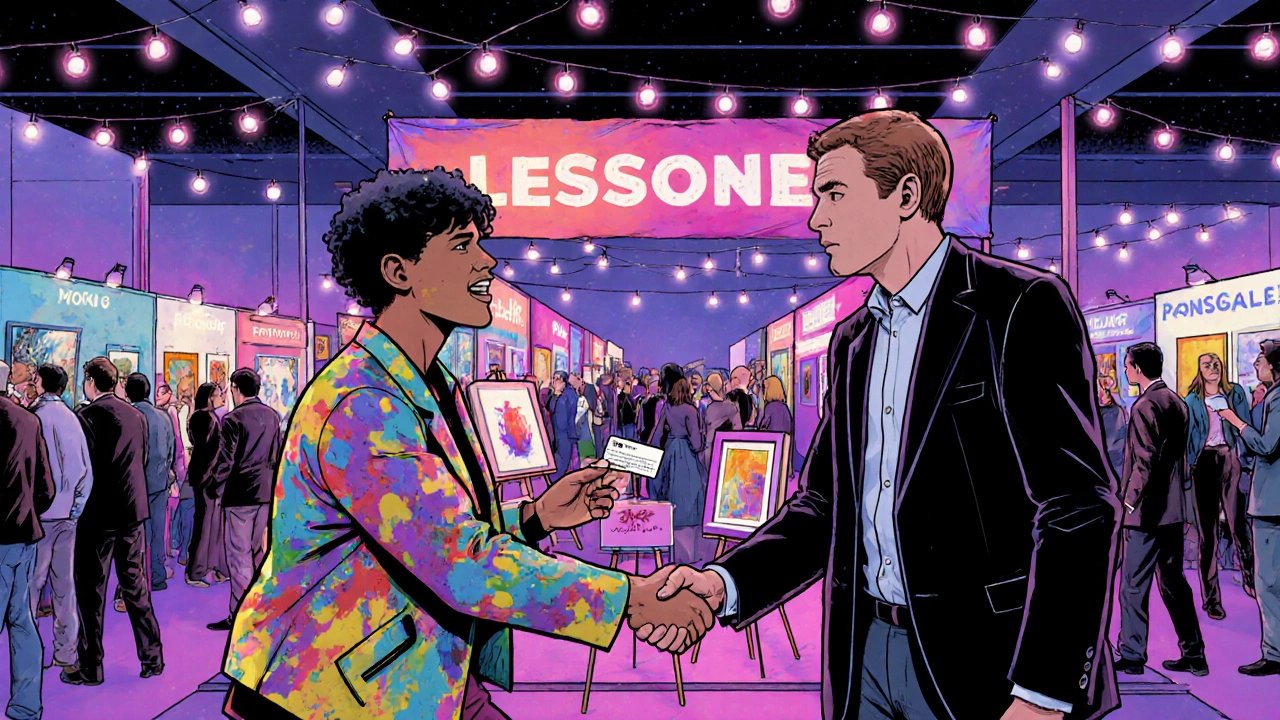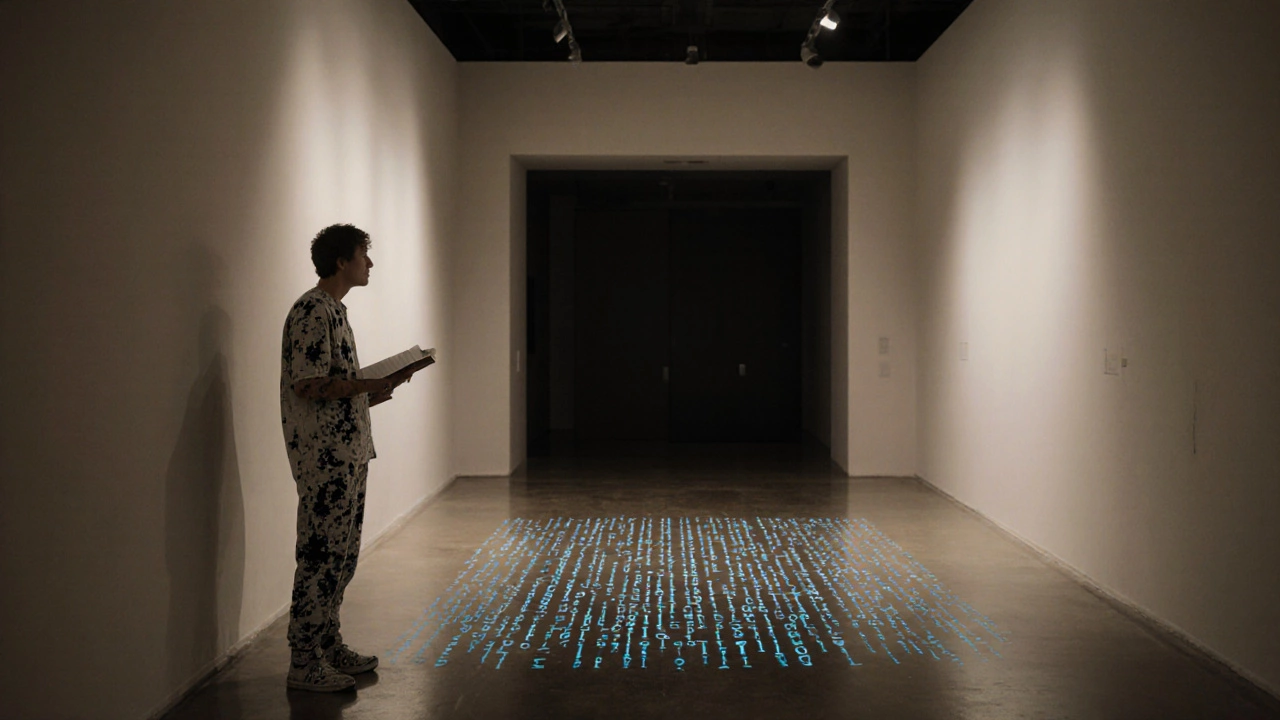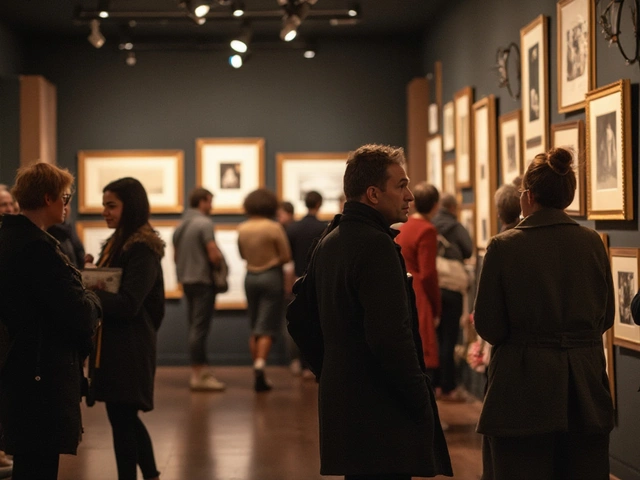Gallery Submission Checklist
Portfolio Readiness Assessment
7 ItemsSubmission Status
Tip: Galleries typically require at least 5 completed items for consideration. Focus on research, portfolio, and statement first.
A gallery is a exhibition space that selects and showcases works from professional artists based on quality, relevance, and market fit. For many creators, breaking into that space feels like decoding a secret code. Below is a step‑by‑step roadmap that shows exactly how to turn studio practice into gallery representation without guessing.
What Galleries Really Look For
Before you start polishing your portfolio, understand the three core criteria galleries use:
- Consistency - a recognizable visual language that evolves over time.
- Marketability - works that appeal to the gallery’s collector base and fit its program.
- Professionalism - reliable communication, clear pricing, and solid documentation.
These factors drive every decision from the initial inbox scan to the final contract.
Building a Standout Portfolio
An artist portfolio is more than a photo dump. It should be a curated narrative that demonstrates depth and direction.
- Choose 12-15 high‑resolution images. Include a mix of finished pieces and close‑up details.
- Provide context. For each work, list title, year, medium, dimensions, and a brief (one‑sentence) concept.
- Show evolution. Arrange images so the viewer sees how your style has progressed over the last 3-5 years.
Keep the file size under 10MB for email submissions and host the full set on a clean, fast‑loading website.
Crafting an Effective Artist Statement
The artist statement is your verbal handshake. It should answer three questions in 150 words or less:
- What themes or ideas drive your work?
- How do you approach material and process?
- Why does this matter to an audience today?
A concise, jargon‑free statement helps curators quickly gauge whether you fit their program.

Researching and Targeting the Right Galleries
Not every gallery is a good match. Follow this quick research routine:
- Identify niche. Look for galleries that specialize in your medium (e.g., contemporary painting, sculpture, digital art).
- Check recent shows. Review exhibition archives to see if your aesthetic aligns.
- Read submission guidelines. Some only accept online forms; others prefer printed portfolios.
Make a spreadsheet with columns for gallery name, location, focus, submission method, and deadline. Prioritize the top 10 that match your profile.
Submitting Your Work: Best Practices
When you finally hit send, follow these rules:
- Personalize the email. Address the curator by name (e.g., "Dear curator,"). Mention a specific recent exhibition that resonated with you.
- Attach a one‑page PDF. Include a short bio, artist statement, and selected works with their details.
- Provide clear pricing. List a price range or ask if the gallery prefers to discuss later.
- Follow up politely. If you haven’t heard back after two weeks, send a brief check‑in.
Never send unsolicited large files or unasked‑for links - it signals a lack of professionalism.
Networking with Curators and Attending Art Fairs
Personal connections still matter. Here’s how to make them count:
- Attend opening receptions. Introduce yourself, carry a business card, and reference a piece you liked.
- Volunteer at art fairs. Roles like "installation assistant" let you meet gallery reps and learn the logistics of large‑scale shows.
- Join local artist collectives. Many cities host monthly critique nights where curators occasionally sit in.
A well‑timed conversation can turn a cold submission into a warm invitation.

Alternative Paths: Online Platforms and Pop‑up Shows
Traditional brick‑and‑mortar galleries aren’t the only route. Consider these alternatives:
| Model | Pros | Cons | Typical Commission |
|---|---|---|---|
| Traditional Gallery | Physical presence, established collector base, curatorial support | High competition, strict selection, longer sales cycle | 40-50% |
| Online Gallery (e.g., Artsy, Saatchi Art) | Global reach, lower overhead, easier entry | Less tactile experience, algorithm‑driven visibility | 30-35% |
| Pop‑up/Project Space | Creative freedom, direct sales, community buzz | Logistics responsibility, limited credibility | Variable, often 0% (artist keeps full price) |
Each model can act as a stepping stone. Many artists debut online, then leverage successful sales to attract a physical gallery.
Common Pitfalls and How to Avoid Them
Even seasoned creators stumble. Watch out for these traps:
- Mass mailing. Sending identical emails to dozens of galleries shows no research.
- Overpricing or underpricing. Use recent sales data from similar artists to set realistic prices.
- Ignoring feedback. If a curator offers constructive criticism, note it and adjust your approach.
- Neglecting documentation. Keep high‑resolution images, provenance records, and condition reports ready.
Addressing these issues early boosts credibility and speeds up acceptance.
Quick Checklist Before You Submit
- Researched 10+ galleries that match your medium and theme.
- Prepared a curated portfolio of 12-15 images with full metadata.
- Written a 150‑word artist statement that answers who, what, why.
- Created a one‑page PDF bio + statement + selected works.
- Personalized each email and attached the PDF.
- Follow‑up schedule set (two weeks, then one month).
Tick each box, hit send, and you’ll be well on your way to seeing your work on gallery walls.
Frequently Asked Questions
How many pieces should I send to a gallery?
Most galleries ask for 8-12 works. If the submission form limits you, choose your strongest pieces that showcase range and depth.
Do I need to be represented by an agent before approaching galleries?
No. Many artists secure their first gallery contract on their own. Agents become useful after you have a proven sales record.
What’s the typical commission split?
Traditional galleries usually take 40-50% of the sale price. Online platforms are often lower, around 30%, while pop‑up shows can be commission‑free.
How long does the review process take?
It varies. Some galleries reply within two weeks; others may take up to six weeks, especially if they have a seasonal jury.
Should I price my work higher for galleries?
Price according to market standards for your medium and experience. Overpricing can deter galleries; underpricing undervalues your practice.


